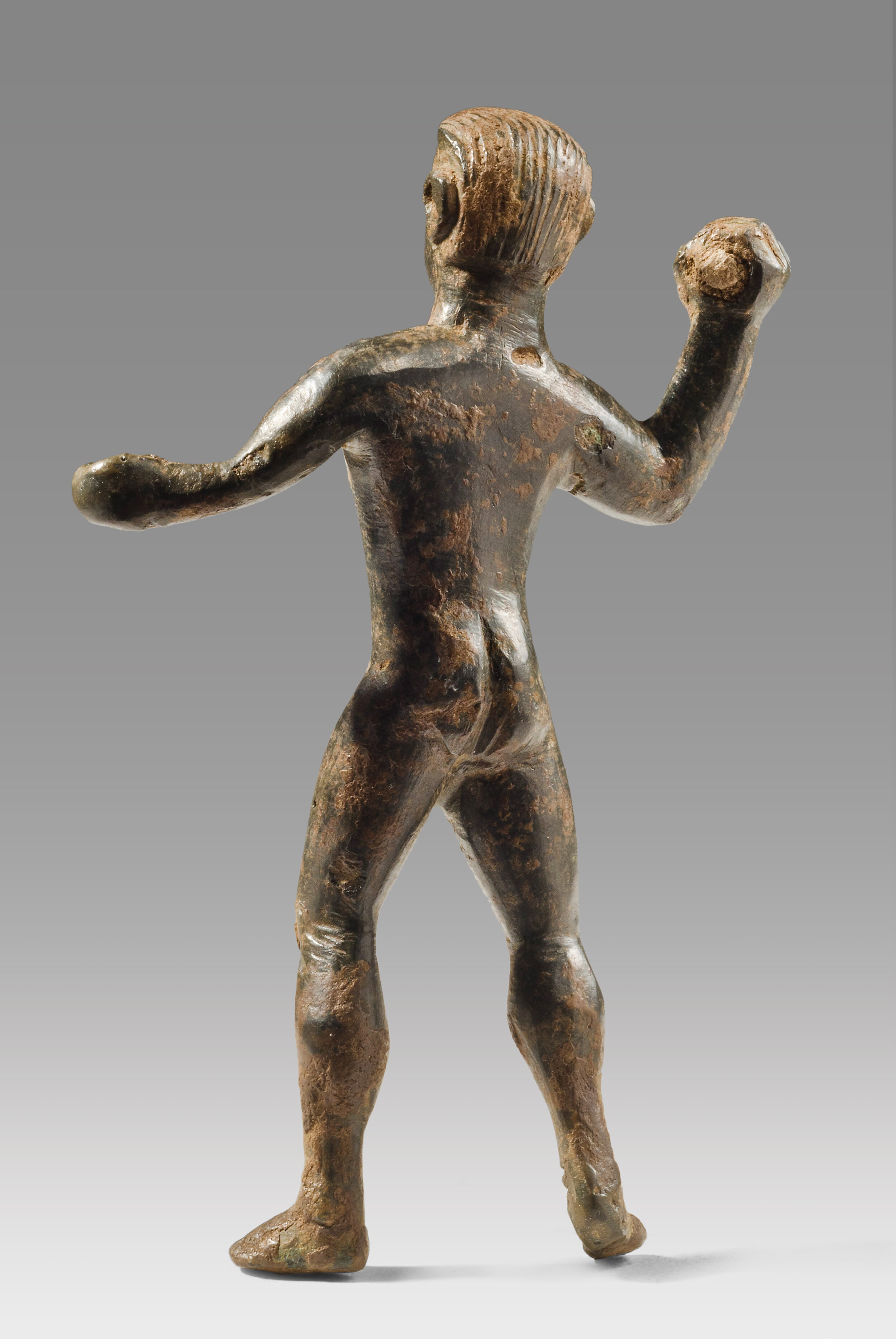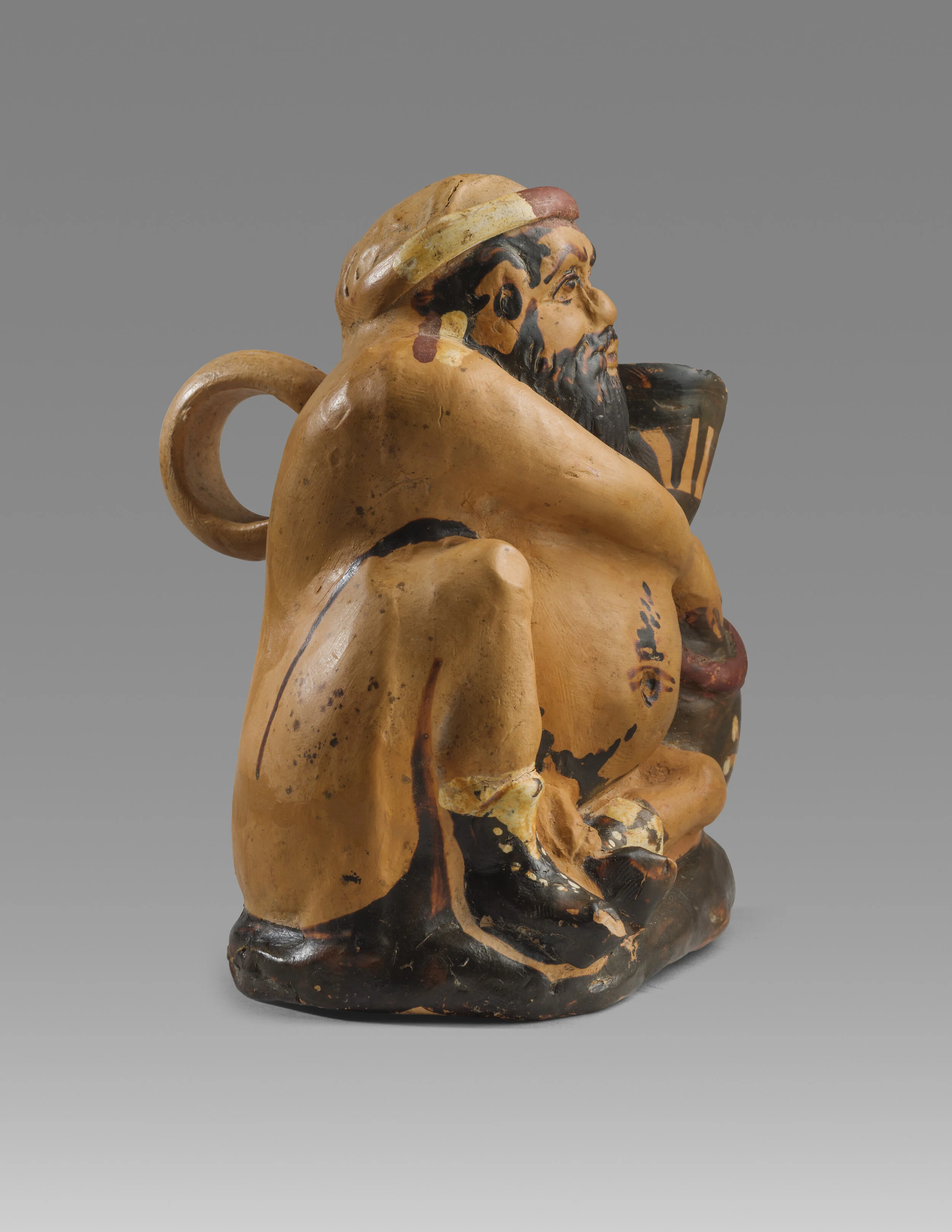Ancient Italic Bronze Herakles




Ancient Italic Bronze Herakles
Italic, 5th – early 4th century B.C.
Bronze
H: 9.8 cm
Serial: 9281
Provenance
German art market, 1998
The statuette is solid cast bronze in the form of a nude male figure standing securely with his right arm raised while extending his lowered left arm forward. His left leg and foot are also placed forward; his right leg and foot are extended back and to the side, which stabilizes and balances the pose of the figure. The face has almond shaped eyes beneath prominent eyebrows, a well-defined mouth, nose and chin. The distinctive cap-like hair of the head is marked with parallel incised lines extending from front to back. The anatomy is schematic and stylized, but modeled enough to show the well-developed muscles of his lower body: the buttocks, thighs, and calves. The navel and nipples are indicated by circles made with a punch. The figure’s right fist was clenched around a club, now missing. The left arm and hand also supported objects, the skin of the Nemean lion draped across the arm and likely the apples of the Hesperides held in the hand.
Even without his usual attributes of club and lion skin, the figure can be identified as the deified hero, Herakles, particularly with comparison to similar statuettes of the type, some examples of which are in the collections of the Metropolitan Museum of Art in New York (Italic bronze statuettes of Herakles, acc. nos. 96.9.424, 96.9.426, 96.9.432, and 1977.194.5) and the Bibliothèque Nationale in Paris [acc. nos. 529, 530, for which see A. Adam, Bronzes Étrusques et Italiques (Paris 1984), 182, nos. 274, 275). The examples in Paris are identified with a “Bologna Group” by G. Colonna and exhibit the distinctive cap-like hair of these figures, as does this statuette. Famous in Greece and throughout the Mediterranean region, Herakles was known in Italy as Hercle by the Etruscans and Hercules by the Romans. Upon completion of his notable Twelve Labors as a mortal man, Herakles was transported to Olympos where he lived as an immortal being in a blissful existence among the gods. Also known in Greek myth for being the founder of the Olympic Games, large scale sculptures of Herakles in marble and bronze adorned the gymnasia and sporting grounds of ancient Greece. The hero was seen as an inspiration to the youth of the day because he overcame all of the challenges that were placed before him. During the Classical and Hellenistic periods small bronze figurines of Herakles functioned as votive offerings in sanctuaries throughout the ancient world, from Greece to the Italian peninsula, as is likely with this fascinating statuette.







